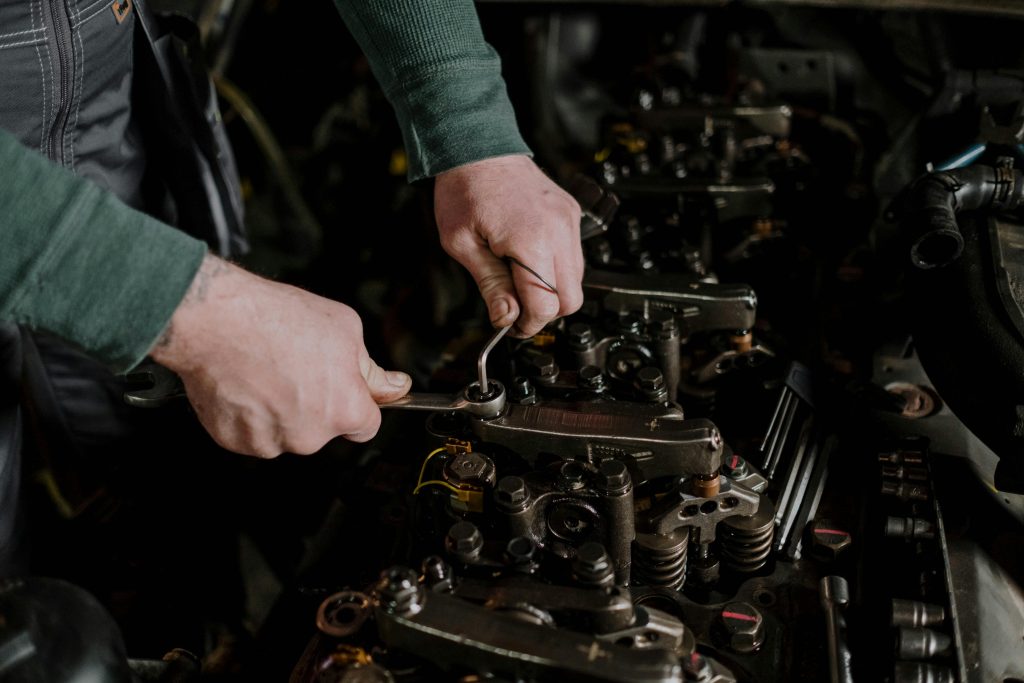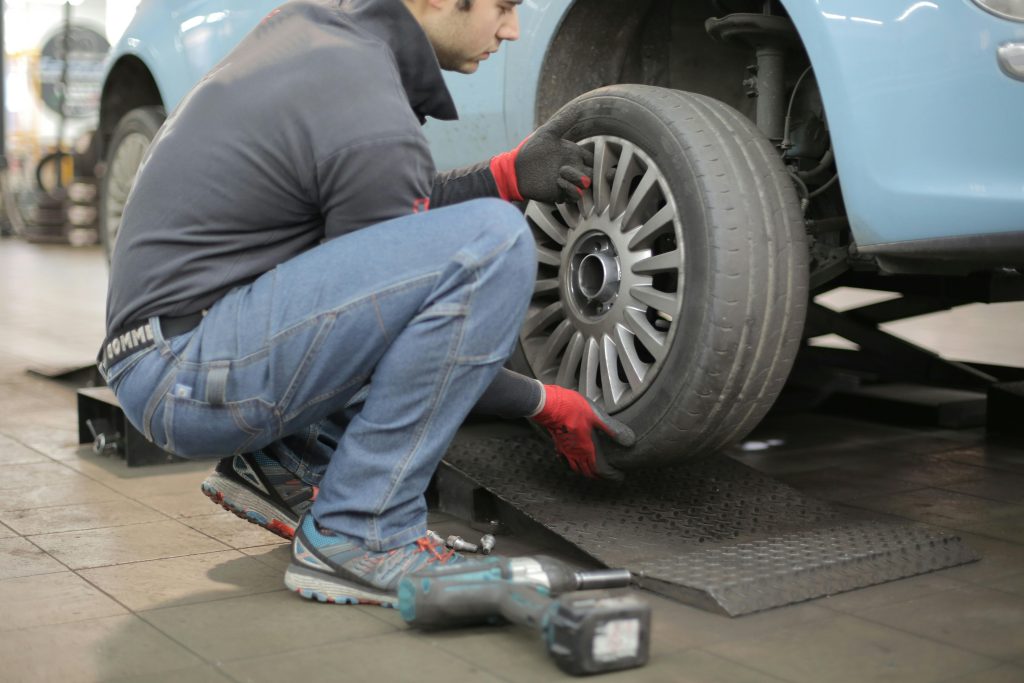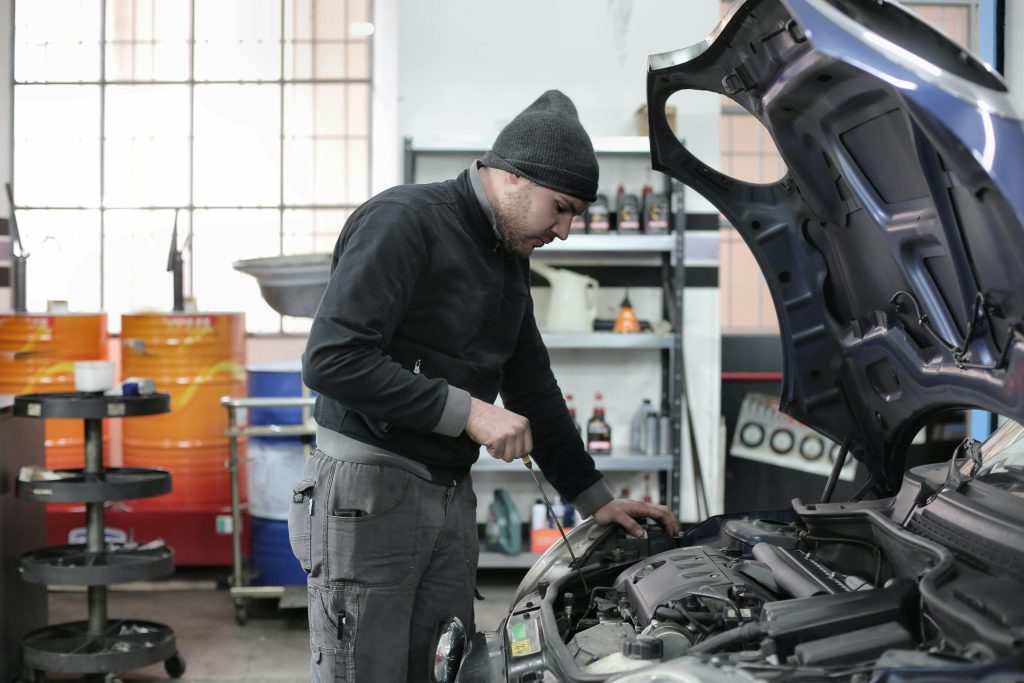The automotive repair industry plays a crucial role in keeping vehicles safe, efficient, and road-ready. As cars age and technology evolves, the demand for skilled repair professionals, diagnostic tools, and efficient service models continues to rise.
In this comprehensive breakdown of the automotive repair industry statistics, we’ll explore the market’s current size, projected growth, and trends shaping the industry, along with key car repair statistics and insights from auto repair industry statistics that highlight what drivers pay for today.
The Size of the Automotive Repair Industry
The global automotive repair market was valued at over $1.1 trillion in 2024, and it’s expected to grow to $2.4 trillion by 2034, growing at a compound annual growth rate (CAGR) of 7.6%. This remarkable expansion highlights how essential vehicle repair and maintenance have become in an era of longer-lasting cars and increasingly complex automotive systems.
In the United States, the automotive repair and maintenance services market was valued at approximately $183.4 billion in 2023. Analysts project robust growth over the coming years, with a compound annual growth rate (CAGR) of around 10.1% between 2024 and 2032, reflecting rising demand for vehicle servicing, maintenance, and repair across passenger and commercial fleets. Supporting this thriving market are more than 176,000 automotive repair and maintenance establishments across the U.S., employing over 1 million Americans, according to BLS data.
As demand continues to rise, keeping shops fully staffed can be a challenge, making automotive recruitment solutions an increasingly valuable option for ensuring skilled technicians are in place to meet service needs.

What’s Driving Growth in the Auto Repair Industry
Several powerful forces are fueling the expansion of the auto repair industry:
1. The Aging Vehicle Fleet
One of the most significant statistics shaping the automotive repair industry statistics is the increasing average age of vehicles. In 2024, the average age of light vehicles in the U.S. hit a record 12.6 years.
Older vehicles naturally require more maintenance, ranging from brake replacements and transmission repairs to new tires and exhaust systems. This longevity-driven demand ensures a steady flow of business for independent garages and large repair chains alike.
2. Transition Toward Predictive Maintenance
While many vehicle owners still rely on reactive maintenance, fixing issues only after they appear, many are shifting toward predictive maintenance strategies.
Predictive systems, powered by IoT sensors and diagnostic data, can alert drivers and service providers before a part fails. The predictive automotive maintenance market itself is growing rapidly, expected to increase by 18% CAGR between 2023 and 2032.
For repair shops, this means earlier intervention, better parts management, and higher customer retention.
3. The Rise of Electric Vehicles (EVs)
Electric vehicles are changing the landscape of car maintenance and repair. While they have fewer mechanical components than traditional internal combustion engine vehicles, EVs demand specialized skills for handling batteries, software updates, and complex electrical systems.
As regulations push automakers and repair shops to adopt zero-emission standards, businesses that invest in EV diagnostics and technician training now will be better prepared to serve the evolving automotive market.
4. The Decline of DIY Repairs
The days of weekend mechanics fixing cars in their driveways are fading fast. Modern vehicles come equipped with complex computer systems, sensors, and proprietary technologies that make home repairs difficult or impossible without professional-grade tools.
This shift from DIY (Do-It-Yourself) to DFY (Done-For-You) has significantly benefited the professional repair industry, increasing customer reliance on certified technicians.
5. Mobile Mechanics and Convenience Services
Consumers increasingly expect fast, flexible service. The rise of mobile auto repair services, where mechanics come directly to a customer’s home or office, has grown rapidly, offering convenience without compromising quality.
For time-conscious drivers, mobile options provide maintenance, car diagnostics, and even minor repairs on-site, helping shops expand their reach beyond physical locations.
The Most Common Auto Repairs
While every vehicle and driving condition is different, some repairs occur more frequently than others. According to automotive repair industry statistics & recent car repair statistics, the following are the most common auto repairs across U.S. vehicles:
- Brake system repairs: Pads, rotors, and fluid replacements remain top earners for most shops.
- Oil and filter changes: Essential for maintaining engine health and efficiency.
- Battery replacements: Especially with increased strain from modern electrical systems.
- Tire services: Including rotations, balancing, and replacements due to wear or punctures.
- Check engine diagnostics: As onboard systems become more sophisticated, error codes and sensor issues are routine visits.
EVs are beginning to alter this mix slightly, with fewer oil changes and transmission repairs, but more attention to software calibration and battery health checks.

Economic Impact and Profitability
The automotive repair industry statistics highlight its significant contribution to the global economy, employing skilled technicians, administrative staff, and technology experts.
Despite economic fluctuations, the repair industry has proven recession-resistant. Even during downturns, consumers often opt to repair vehicles rather than purchase new ones, especially when new car prices and interest rates are high.
Profit margins, while tight in some segments, remain stable thanks to rising demand, subscription-based maintenance plans, and data-driven service recommendations.
Technological Transformation
The future of the auto repair industry, as reflected in the automotive repair industry statistics, is deeply intertwined with technology. From digital diagnostics to telematics, innovations are improving both customer experience and shop efficiency, while auto repair statistics show increasing demand for skilled technicians and advanced tools. Modern repair shops are adopting:
- AI-driven diagnostic tools that pinpoint issues faster and with greater accuracy.
- Connected car platforms that send maintenance alerts directly to service centers.
- Digital inspection reports with photos and videos to build trust and transparency.
- Inventory automation to optimize parts availability and reduce downtime.
These changes are helping smaller, independent shops compete with large franchises while offering better service experiences.
Labor Shortages and the Skills Gap
Automotive repair industry statistics reveal a growing shortage of skilled technicians, as modern vehicles increasingly require expertise in diagnostics, software, and EV systems. The supply of trained professionals struggles to keep pace with demand, creating workforce challenges across the sector.
According to the BLS, about 70,000 openings for automotive service technicians and mechanics are projected each year from 2024 to 2034, mostly to replace retirees or workers changing occupations. Training programs, certifications, and EV-focused education are helping address the gap, and automotive recruitment solutions can support shops in filling critical roles.
Challenges Facing Auto Repair Businesses
Even with strong growth, the industry faces several ongoing challenges:
- Rising costs: Inflation and supply chain disruptions have increased the price of parts and labor.
- Regulatory compliance: Emission and safety standards vary widely by state and country.
- Technology access: Independent garages often struggle to afford or access OEM diagnostic tools.
- Customer retention: As competition increases, maintaining customer loyalty requires superior service, transparency, and digital convenience.
Shops that invest in automation, training, and data management are best positioned to overcome these obstacles.
How Much Does Car Maintenance Cost?
The cost to maintain a car varies based on the make, model, age, driving habits, and type of service. Automotive repair industry statistics show that maintenance costs differ widely across vehicle types, with luxury vehicles, high-performance models, and older cars typically requiring more frequent and expensive upkeep. Understanding service types and typical price ranges can help car owners budget effectively and plan for routine repairs.
Types of Vehicle Service
Vehicle maintenance can be broken down into three main categories, each offering a different level of inspection and care depending on the vehicle’s age, mileage, and usage.
Basic or Interim Service
Interim services focus on essential maintenance tasks to keep a vehicle running smoothly. Typical activities include:
- Changing engine oil and filters
- Checking and topping off fluids
- Inspecting battery, lights, tires, and brakes
- General inspection of suspension, steering, and exhaust systems
Average cost: $95–$240
Time required: Approximately 2 hours
Full Service
A full service provides a more thorough inspection and maintenance, usually recommended annually or every 12,000 miles. In addition to the tasks in an interim service, full service often includes:
- Engine and gearbox inspection
- Front and rear brake checks
- Heating, cooling, and electrical system assessments
- Up to 80 additional component checks
Average cost: $160–$355
Time required: Around 3 hours

Major or Comprehensive Service
Major services are the most extensive, typically performed every two years. They include all checks from basic and full services, plus:
- Replacement of worn parts such as spark plugs, brake pads, belts, and fuel lines
- Inspection of wiring, transmission, and safety systems
- Road testing to ensure performance and reliability
Average cost: $295–$475
Time required: 3–4 hours
Conclusion
The automotive repair industry continues to grow, driven by aging vehicles, advanced technology, and shifting consumer expectations. Automotive repair industry statistics highlight the increasing market size, rising demand for skilled technicians, and the shift toward predictive and EV-focused maintenance. Skilled technicians, efficient service models, and adoption of new tools are key to staying competitive.
With a value of over $1.1 trillion in global revenue and millions of professionals worldwide, automotive repair remains a foundation of the modern economy, one that’s being rapidly transformed by data, innovation, and sustainability. As we move into a new era of mobility, repair shops that embrace these changes will not only thrive but define the future of how the world keeps its wheels turning.
Sources Used:
- https://autoleap.com/blog/auto-repair-industry-trends/
- https://www.bbb.org/all/industry-hub/auto-repair
- https://www.mordorintelligence.com/industry-reports/united-states-automotive-service-market
- https://www.bls.gov/ooh/installation-maintenance-and-repair/automotive-service-technicians-and-mechanics.htm
- https://www.jdpower.com/cars/shopping-guides/how-much-does-it-cost-to-get-your-car-serviced
- https://www.bumper.co/blog/what-are-the-most-common-car-repairs
